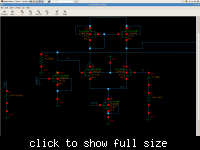engrMunna
Advanced Member level 4

Hi I am using the circuit for current integration. the current input is at the capacitor node. now the thing is that I want to bias it with a tail current of around 8 to 10 uA. But for this tail current to be divided into the two load branches, approximately equally in both the branches, I need some DC biasing at the gate of the input NMOS and the NMOS having the resistor connected to it. But how can I attach a VDC to these gates when this is part of my signal path?
I mean the input NMOS gate will be directly connected to my current input. And thealso there will be some small signal in the feedback of the other NMOS. So how to bias these two THANKS! (NOTE single ended input.)

I mean the input NMOS gate will be directly connected to my current input. And thealso there will be some small signal in the feedback of the other NMOS. So how to bias these two THANKS! (NOTE single ended input.)



